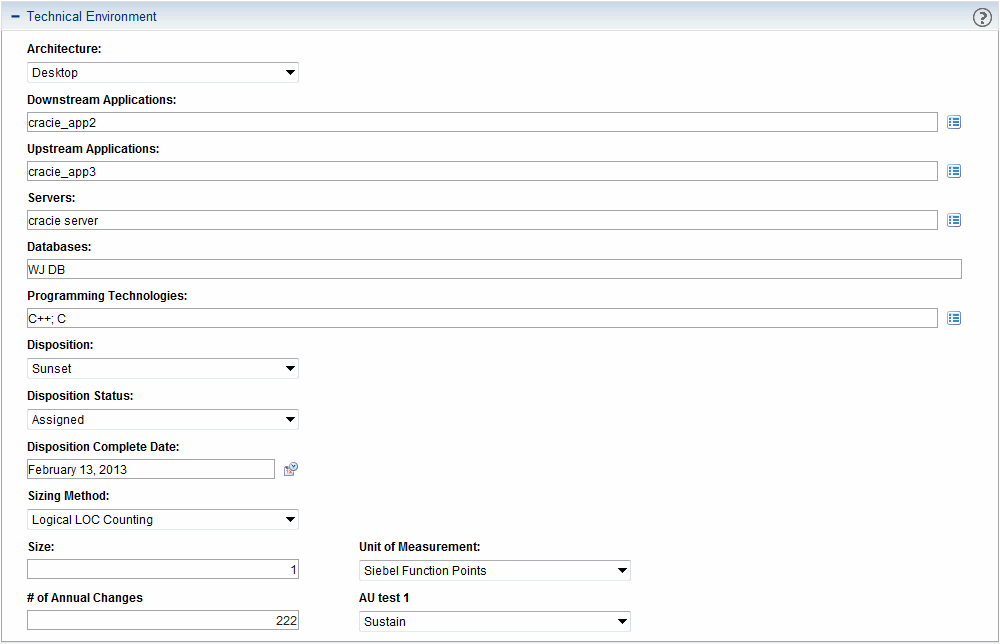Technical Environment
In the Technical Environment section, enter the technologies used in the construction of the application, connectivity to other systems, and planned disposition.
All users can view the data in this section. Users assigned one or more of the following roles can edit the data in this section: Business Owner, Technical Owner, or Respondent (when more information is requested).
Figure A-4. Application Technical Environment section

|
Field |
Description |
|---|---|
|
Architecture |
The type of system on which the application is deployed.
|
|
Downstream Applicationsa |
Zero, one, or more applications that depend on this application's output or updates. |
|
Upstream Applicationsa |
Zero, one, or more applications that produce output or updates on which this application depends. |
|
Servers |
The names of the servers on which the application is deployed. |
|
Databases |
The names of the databases that the application uses. |
|
Programming Technologies |
Zero, one, or more programming, scripting, or descriptive languages or technologies that are used to construct the application. |
|
Disposition |
The next planned step in the lifecycle of the application.
|
|
Disposition Status |
The progress of the selected disposition.
|
|
Disposition Complete Date |
The date on which the disposition of the application is planned to be completed. |
|
Sizing Method |
Methodology used to compute the size of the application.
|
|
Size |
The measurement based on the sizing method. |
|
Unit of Measurement |
The unit of measurement for the sizing method.
|
|
# of Annual Changes |
The number of change requests submitted per year. |
| a. When you configure an upstream or downstream relationship in an entity, you cannot see the relationship between the entities when you view the second entity. Make sure you also configure the relationship in the second entity so the relationship is visible in both entities. For example, if you configure entity B as a downstream entity in entity A, also configure entity A as an upstream entity in entity B. (This is not necessary for viewing relationships in dynamic graphing. Both relationships are visible when you view them in dynamic graphing regardless of whether they are configured in both entities.) | |












